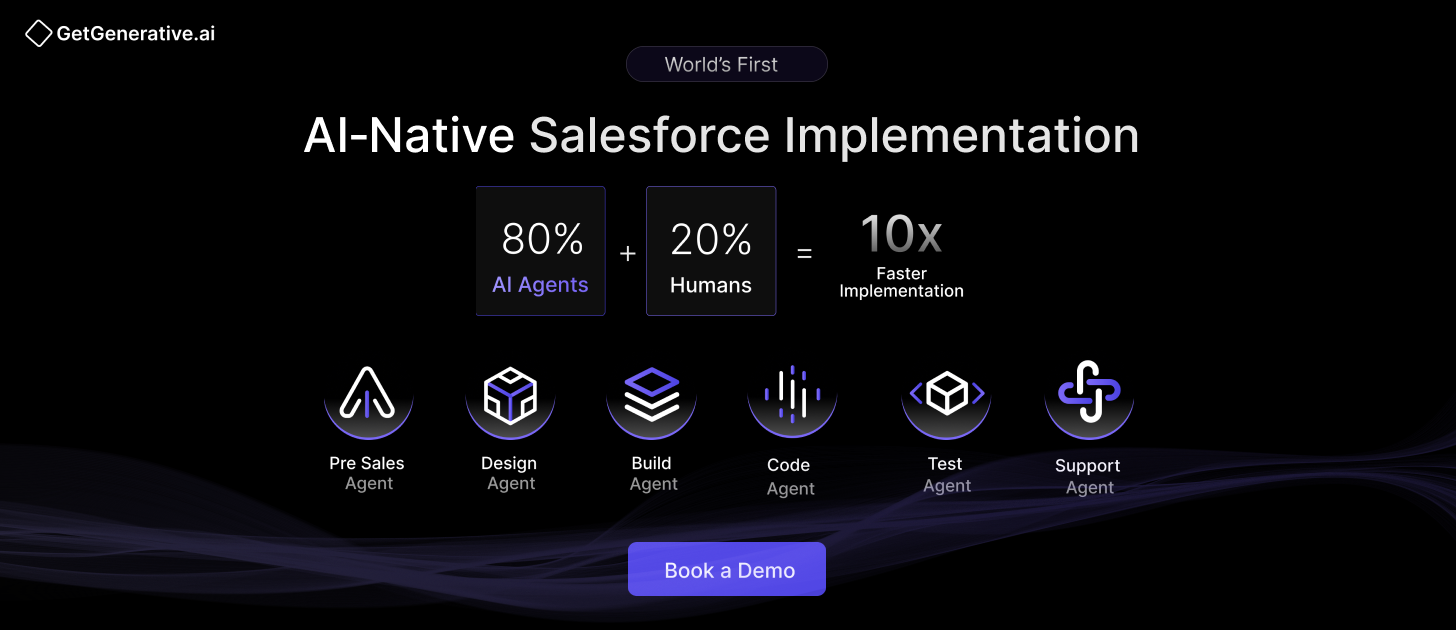Junction Object in Salesforce
As businesses continue to grapple with increasingly intricate data structures, understanding and leveraging junction objects becomes crucial for maximizing Salesforce’s potential. This comprehensive guide will explore the world of junction objects, exploring their characteristics, implementation, and best practices.
What is a Junction Object in Salesforce?
A junction object in Salesforce is a custom object that creates a many-to-many relationship between two other objects. In simpler terms, it’s a bridge connecting two objects that need to have a multiple relationship. This concept is fundamental in database design and is particularly powerful in the context of Salesforce’s data model.
For example, consider a scenario with a “Students” object and a “Courses” object. A student can enroll in multiple courses, and a course can have multiple students. To represent this relationship accurately, you would use a junction object, which might be named “Enrollments.”
Characteristics
Junction objects in Salesforce have several distinct characteristics that set them apart:
- Dual Master-Detail Relationships: A junction object typically has two master-detail relationships, each connecting to one of the objects it’s joining.
- Custom Object Nature: Junction objects are always custom objects, allowing for tailored fields and functionality.
- Indirect Lookup Relationships: They enable indirect lookup relationships between the two primary objects they connect.
- Flexible Field Structure: Beyond the two master-detail relationships, junction objects can have additional custom fields to store relevant information.
- Bi-directional Access: They allow for querying and reporting from both relationship directions.
Creation Steps
Creating a junction object in Salesforce involves several key steps:
- Define the Relationship: Identify the two objects that must be connected in a many-to-many relationship.
- Create the Custom Object: Navigate to Setup > Object Manager > Create > Custom Object to create your junction object.
- Add Master-Detail Fields: Create two master-detail relationship fields, each pointing to one connected object.
- Configure Additional Fields: Add any additional custom fields relevant to the relationship.
- Set Up Page Layouts: Design appropriate layouts for the new junction object.
- Adjust Sharing Settings: Configure sharing rules, considering the inherited sharing from master objects.
- Create List Views: Set up list views to facilitate users’ interactions with the junction object data.
- Implement Validation Rules: Create validation rules to ensure data integrity if needed.
- Test the Implementation: Thoroughly test the new junction object to ensure it functions as expected in various scenarios.
Also Read – Governor Limits in Salesforce
How do you manage access controls for junction objects in Salesforce?
Managing access controls for junction objects requires a nuanced approach due to their unique nature:
- Inherited Sharing: Junction objects inherit sharing settings from both master objects. Users must have appropriate access to both master records to view or edit the junction record.
- Organization-Wide Defaults: Set organization-wide defaults for the junction object, typically to “Private” for maximum security.
- Sharing Rules: Create rules specific to the junction object to grant access to particular groups or roles.
- Field-Level Security: Configure field-level security to control which fields users can see or edit on the junction object.
- Permission Sets: Utilize permission sets to grant specific users or groups access to the junction object and its related functionality.
- Record Types: Implement record types to control page layouts and picklist values based on user profiles.
- Apex Sharing: For complex scenarios, use Apex sharing reasons to manage record access programmatically.
Can you use junction objects to enhance Salesforce reporting capabilities?
Absolutely! Junction objects significantly enhance reporting capabilities in Salesforce:
- Cross-Object Reporting: Create reports that span multiple objects, providing a comprehensive view of related data.
- Flexible Filtering: Use junction object fields to filter report results based on relationship criteria.
- Aggregate Data: Leverage roll-up summary fields on master objects to aggregate data from junction records in reports.
- Custom Report Types: Create custom report types with junction objects to enable tailored reporting solutions.
- Dynamic Dashboards: Build dynamic dashboards that visualize complex relationships using data from junction objects.
- Historical Trending: Utilize historical trend reporting on junction objects to track relationship changes over time.
- joined Reports: Create joined reports to analyze data from multiple related objects, including junction objects.
What are the best practices for naming junction objects in Salesforce?
Adhering to naming best practices for junction objects ensures clarity and maintainability:
- Descriptive Names: Choose names that clearly describe the relationship, e.g., “StudentCourseEnrollment.”
- Consistent Conventions: Establish and follow a consistent naming convention across your org.
- Avoid Abbreviations: Use full words to prevent confusion unless abbreviations are universally understood in your organization.
- Include Both Object Names: Incorporate the names of both related objects in the junction object name when possible.
- Use Singular Form: Name the object in singular form, e.g., “OpportunityContactRole” instead of “OpportunityContactRoles.”
- Consider API Names: API names will be used in code and integrations, so ensure they are clear and consistent.
- Future-Proof Naming: Choose names that will remain relevant even if the nature of the relationship evolves.
How do junction objects affect data security and compliance in Salesforce?
Junction objects play a crucial role in maintaining data security and compliance:
- Granular Access Control: They allow for more granular control over who can access specific relationship data.
- Data Segregation: Junction objects help segregate sensitive relationship data from the main objects.
- Audit Trails: Enable field history tracking on junction objects to maintain detailed audit trails of relationship changes.
- Compliance Reporting: Utilize junction objects to create compliance reports that show complex relationships between regulated data points.
- Data Retention: Implement specific data retention policies on junction objects to comply with regulations like GDPR.
- Encryption Support: Salesforce Shield encryption can be applied to junction object fields for enhanced security.
- Access Monitoring: Salesforce Event Monitoring tracks access and usage patterns related to junction objects.
Also Read – Relationships in Salesforce: A Complete Guide
Are there any limitations or restrictions on creating junction objects in Salesforce?
While junction objects are powerful, they do come with some limitations:
- Two Master-Detail Limit: A junction object can have a maximum of two master-detail relationships.
- Roll-Up Summary Restrictions: Roll-up summary fields can only summarize data from the first master-detail relationship created.
- Deletion Behavior: Records in a junction object are automatically deleted when either master record is deleted, which may not always be desirable.
- Record Limits: Standard Salesforce record limits apply, which may affect scalability for very large datasets.
- Query Complexity: Queries involving multiple junction objects can become complex and may hit governor limits if not optimized.
- User Interface Limitations: Standard Salesforce UI may not always provide the most intuitive way to interact with junction object data.
- Workflow Rule Restrictions: Some workflow actions, like field updates, may be restricted on junction object fields.
Conclusion
Junction objects in Salesforce are a powerful tool for managing complex data relationships. They provide the flexibility and structure to accurately represent many-to-many relationships, enhance reporting capabilities, and maintain data integrity. By understanding the characteristics, implementation steps, and best practices associated with junction objects, Salesforce administrators and developers can unlock new levels of functionality and insight within their organizations.
At GetGenerative.ai, we’ve reimagined Salesforce implementation—built from the ground up with AI at the core. This isn’t legacy delivery with AI added on. It’s a faster, smarter, AI-native approach powered by our proprietary platform.
👉 Explore our Salesforce AI consulting services
Frequently Asked Questions (FAQs)
1. Can a junction object have more than two master-detail relationships?
No, a junction object is limited to two master-detail relationships.
2. How do junction objects affect data storage limits?
Junction object records count towards your organization’s data storage limits like any other custom object.
3. Can I create a junction object between two standard objects?
Yes, you can create a junction object to connect two standard objects.
4. Are junction objects visible in the Salesforce mobile app?
Yes, the Salesforce mobile app can access and manage junction objects.
5. Can I use Process Builder with junction objects?
Yes, you can create processes that involve junction objects using Process Builder.




